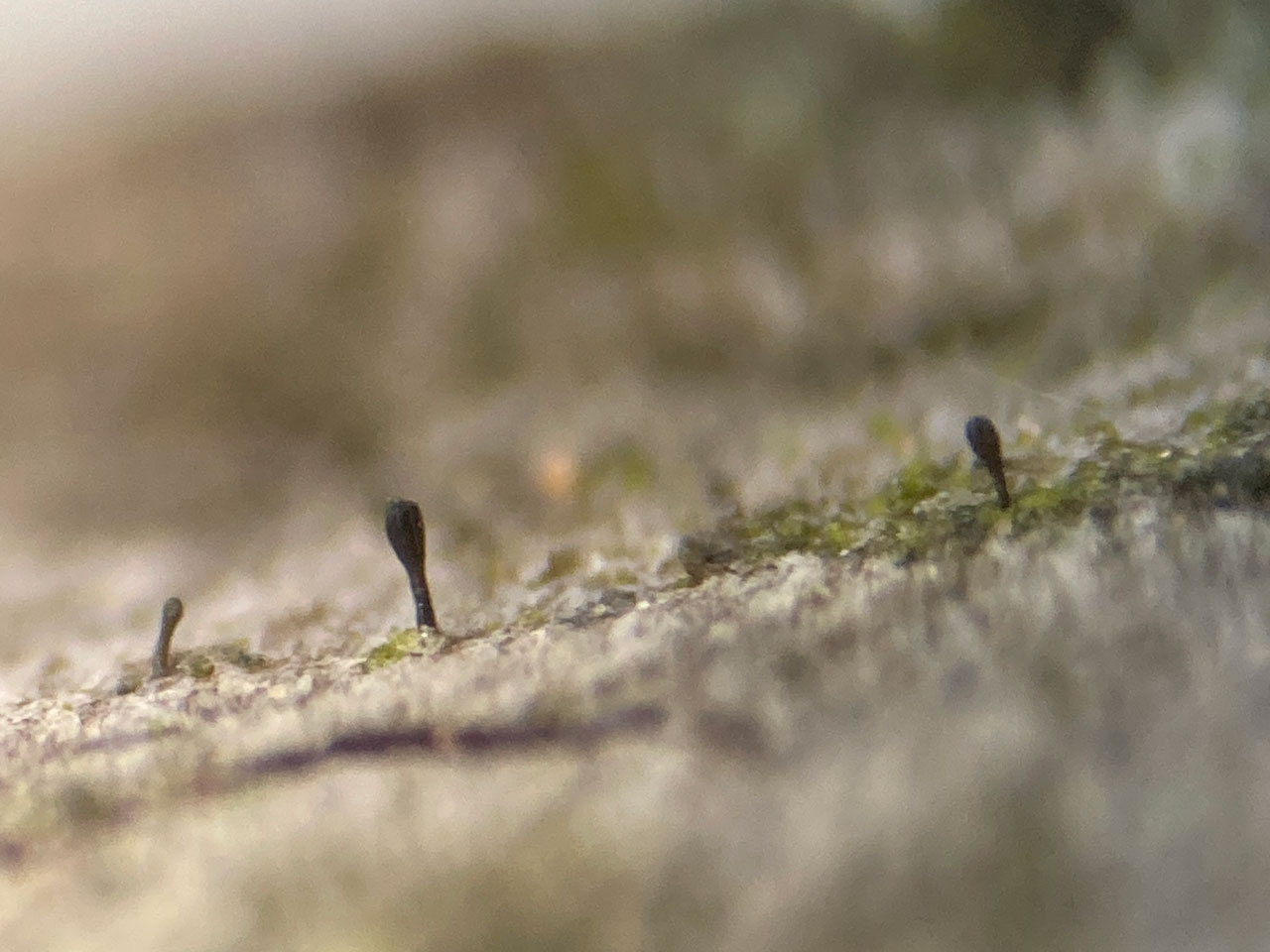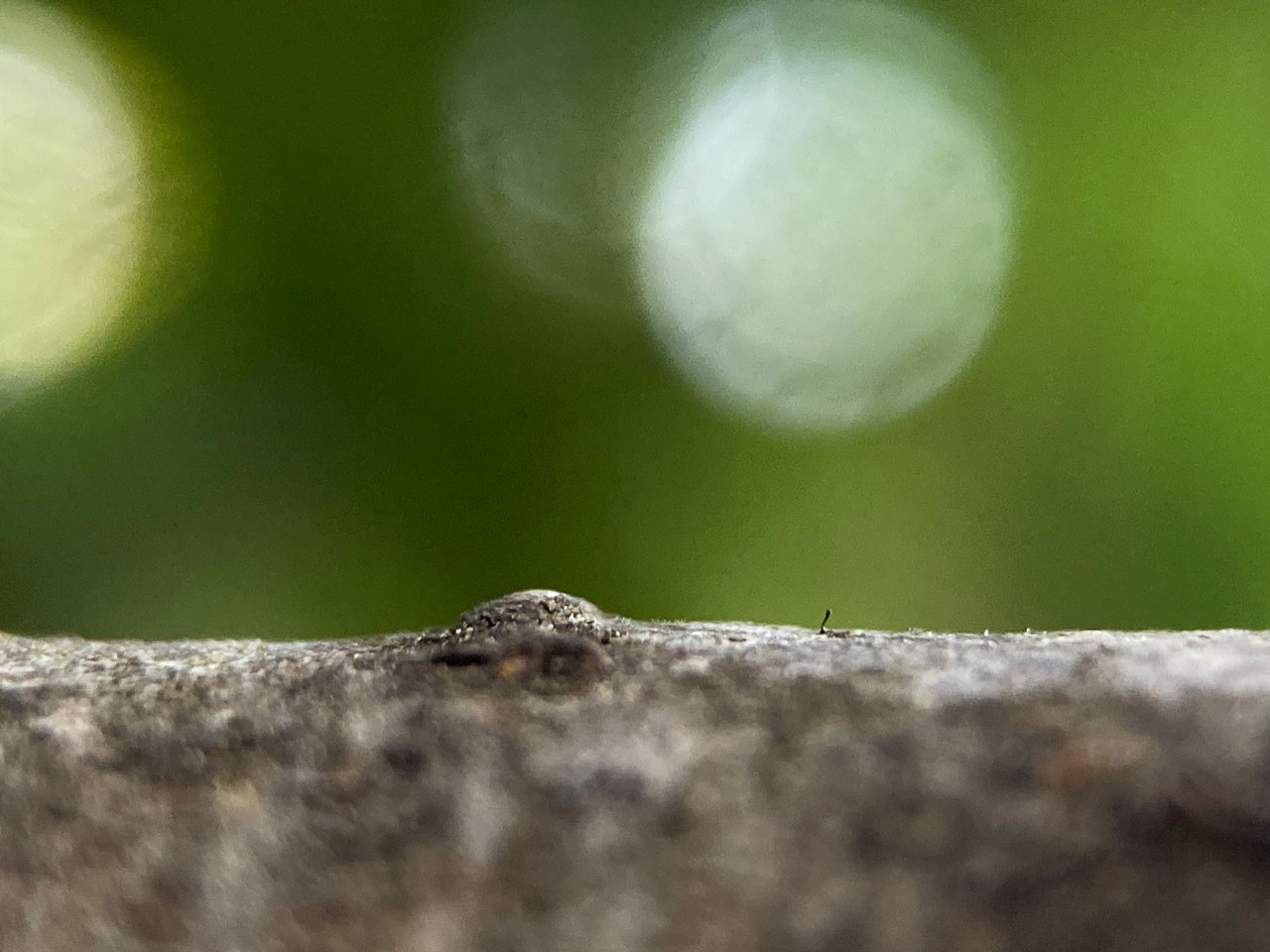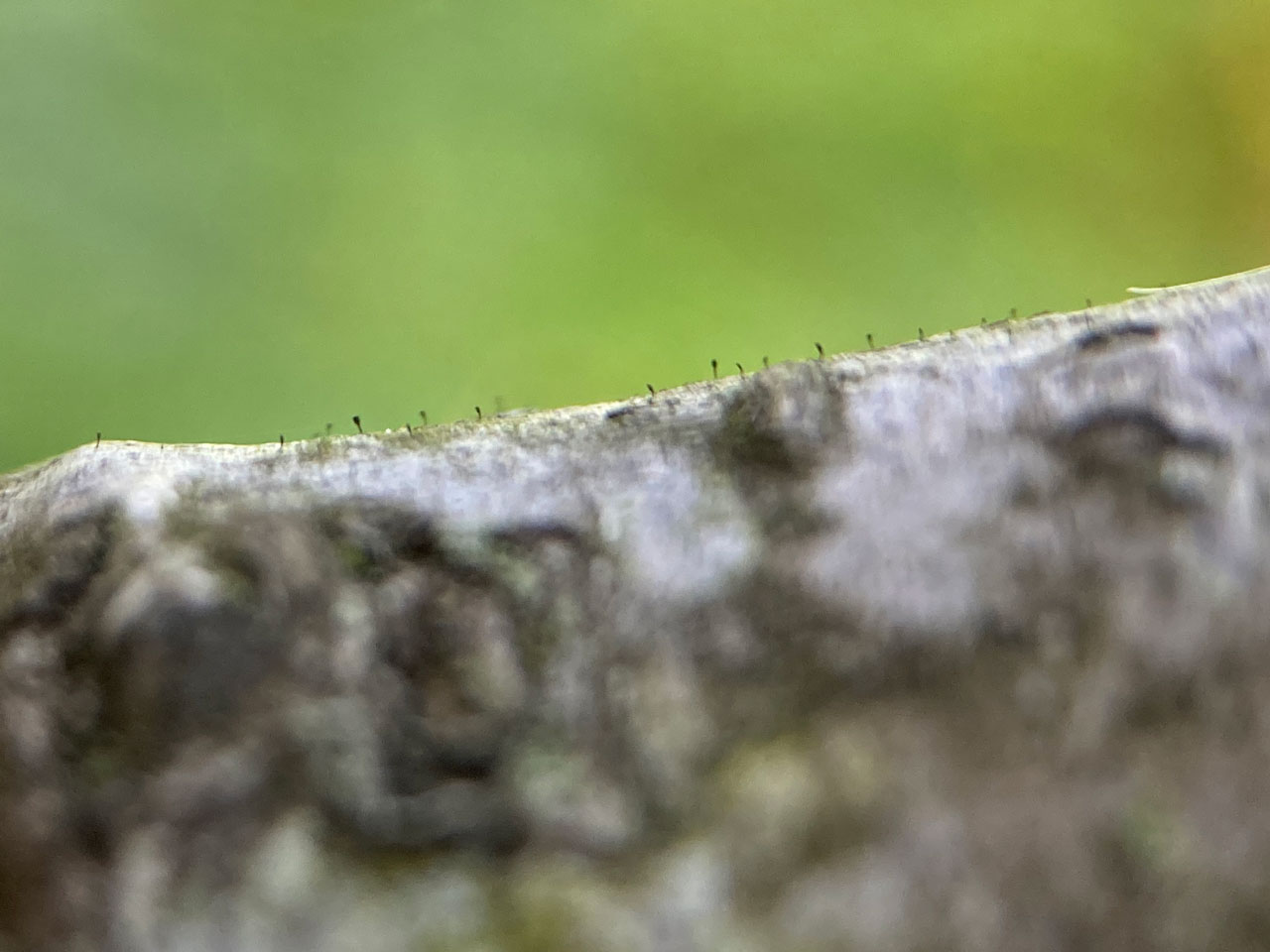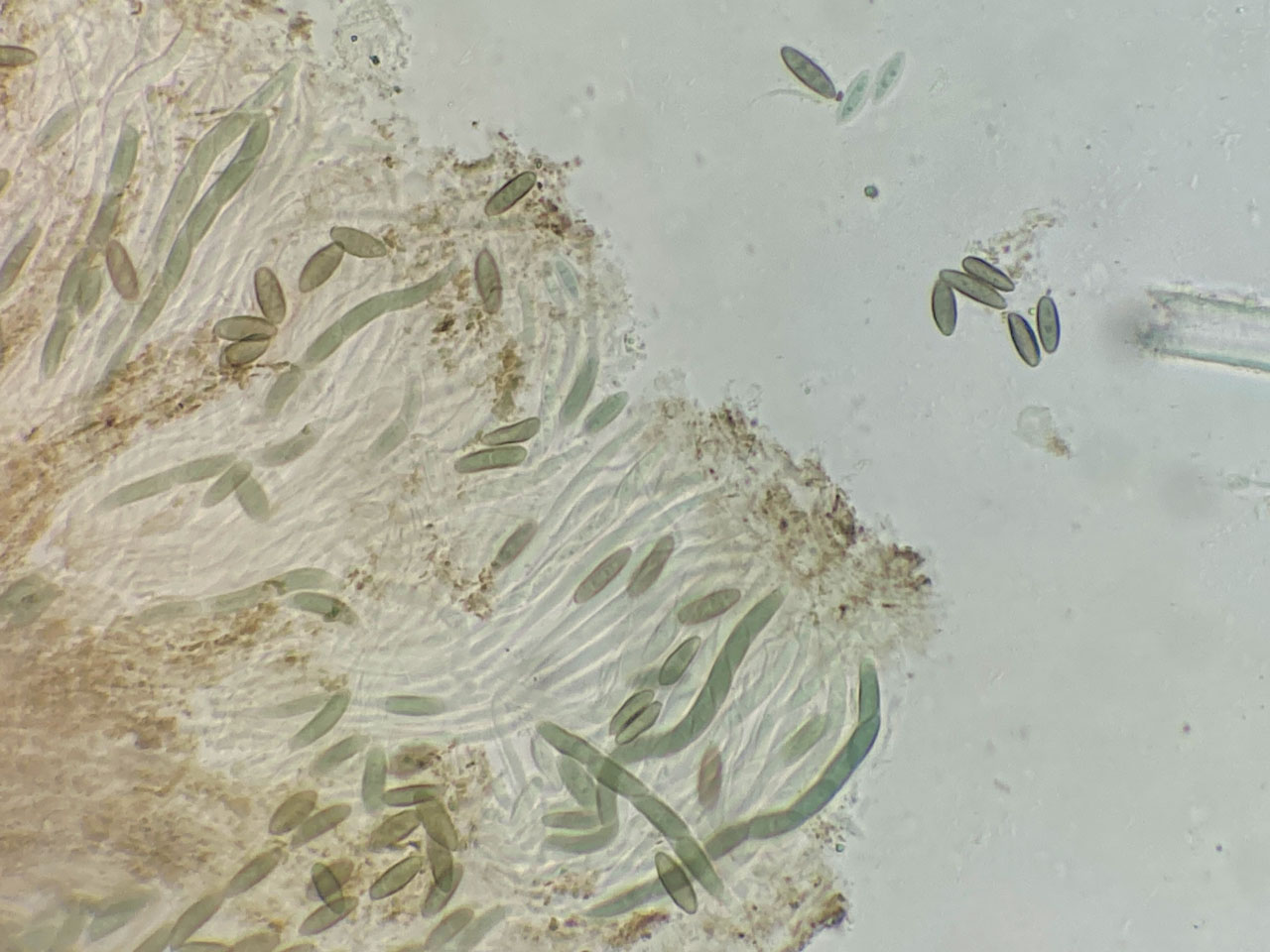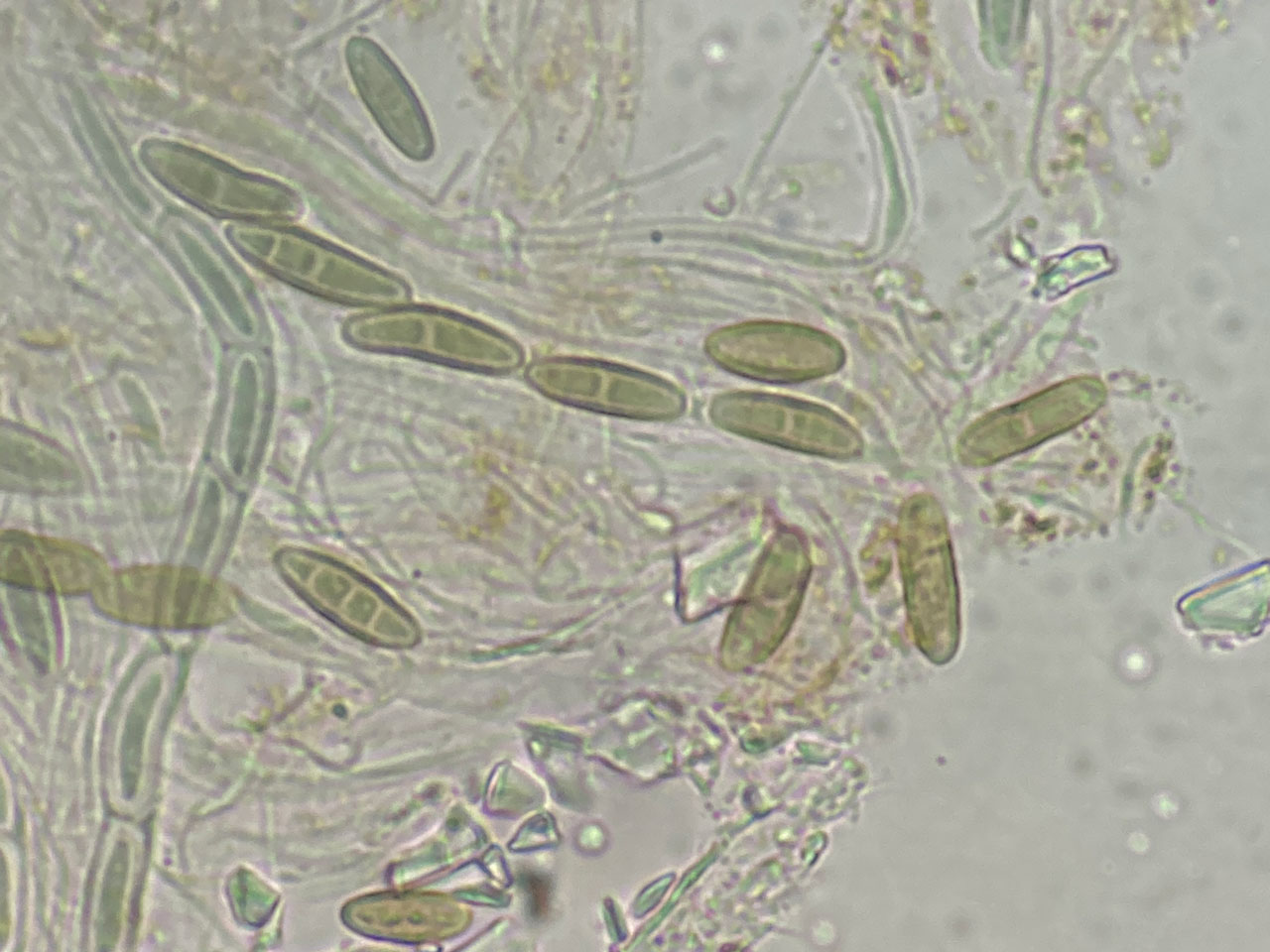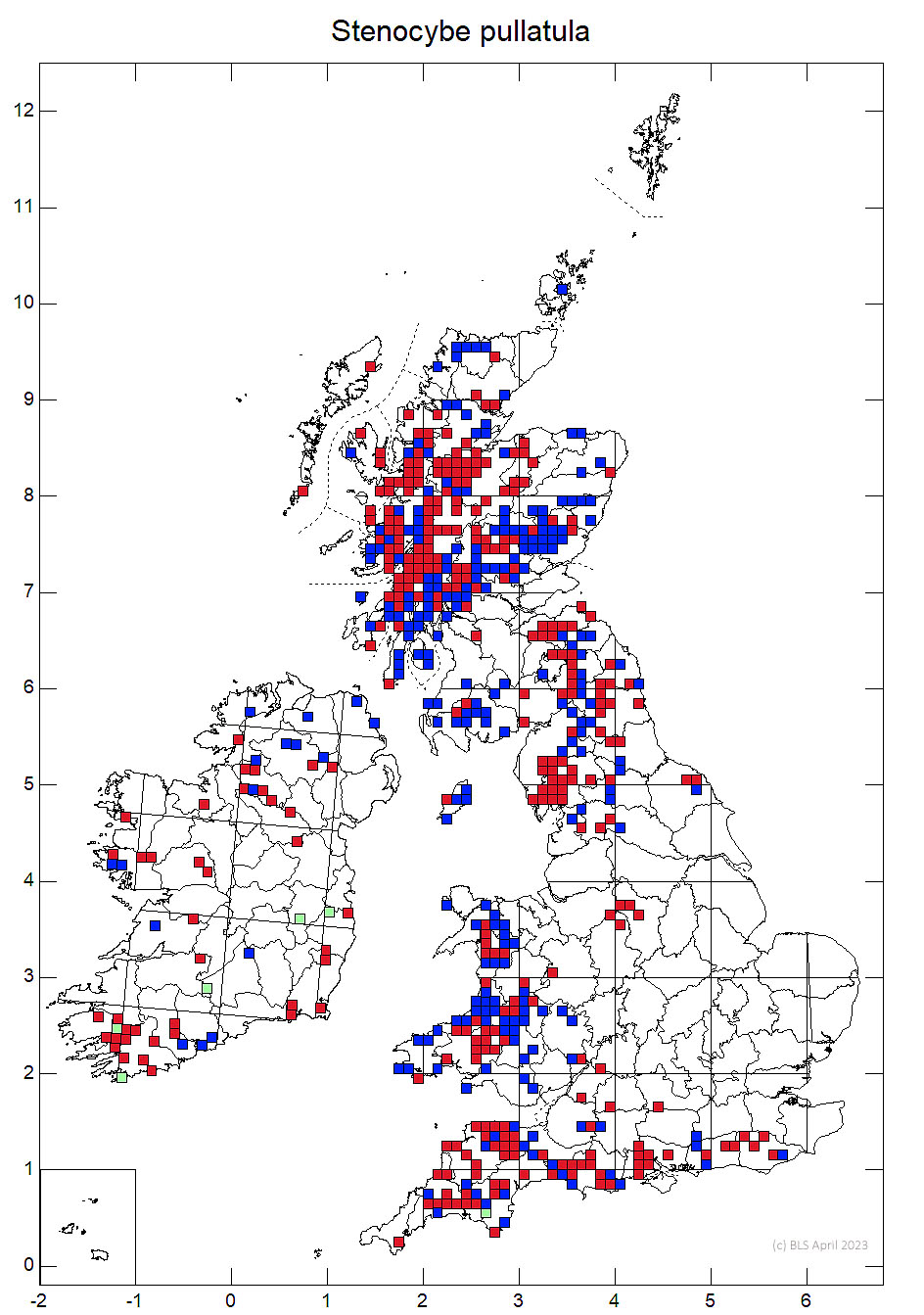A tiny pinhead fungus recorded by lichenologists, confined to thin, usually horizontal branches of Alder in humid locations, but not found on twigs. Common in the uplands but local or overlooked in the lowlands. Finding this tiny fungus requires targeted searching by sighting along horizontal thin Alder branches (not twigs) and looking for the silhouette of the pinhead apothecia.
Apothecia very slender, 0.5–0.8 mm tall, black; stalk to 0.07 mm thick, rarely branched; head 0.08–0.15 mm diam., ± matt, cup- to top-shaped, the asci often somewhat extruded; paraphyses frequently branched and anastomosed, 1–1.5 µm diam. Asci narrowly cylindrical, 84–90 × 4.5–6 µm. Ascospores (10–) 13–18 (–20) × 4–5 (–6) µm, at first aseptate, becoming 1- to 3-septate, uniformly pale grey-brown, minutely warted.
With its small, tardily septate ascospores, this species has similarities to Phaeocalicium.
Not lichenised and its mode of nutrition is unknown, it may have some relationship with the bark chloroplasts. Finding this tiny fungus requires targeted searching by sighting along horizontal thin Alder branches (not twigs) and looking for the silhouette of the pinhead apothecia.
On bark of thin living near horizontal Alnus glutinosa branches, particularly overhanging streams, lakes and bogs in unpolluted hilly districts. Not found on Alder twigs.

Frequent especially in W. & N. Britain.
Common in the uplands in clean air areas, but has declined in the past in places due to algae colonising the thin Alder branches it grows on and locally increasing ammonia pollution could be a threat. Also it should be checked for in areas of the lowlands where may have recovered after the decline in sulphur dioxide pollution.
Sanderson, A., Cannon, P., Coppins, B., & Simkin, J. (2025). Mycocaliciales: Sphinctrinaceae, including Chaenothecopsis, Mycocalicium, Phaeocalicium, Sphinctrina and Stenocybe. Revisions of British and Irish Lichens 52: 1–15.
Text by Neil A Sanderson based on Sanderson et al (2025).
